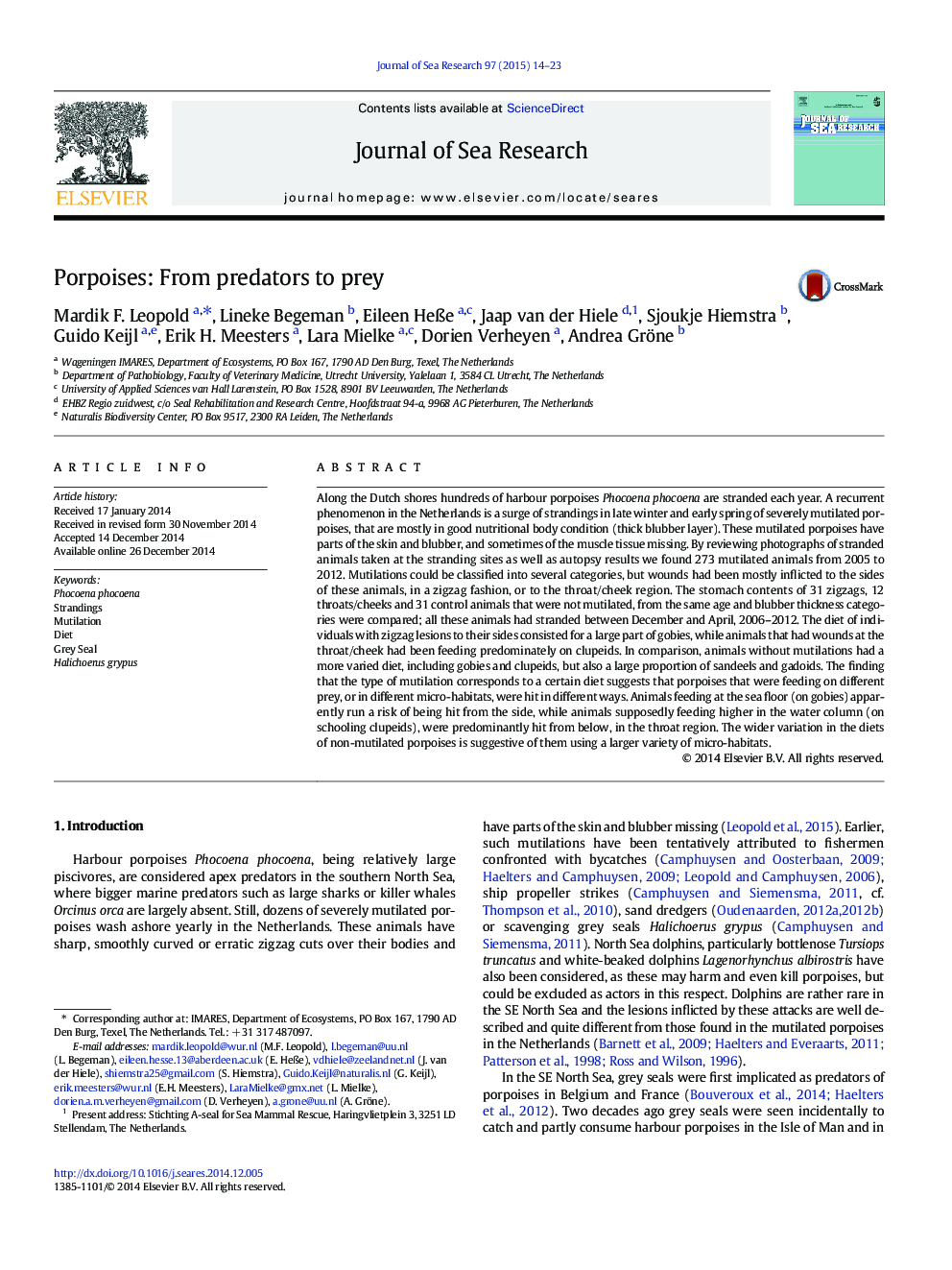| کد مقاله | کد نشریه | سال انتشار | مقاله انگلیسی | نسخه تمام متن |
|---|---|---|---|---|
| 4549773 | 1627477 | 2015 | 10 صفحه PDF | دانلود رایگان |

• Dozens of severely mutilated porpoises are stranded each year on Dutch beaches.
• These mutilations are inflicted by grey seals.
• Attacks are mostly directed to either the side or the throat of these porpoises.
• Diets of mutilated porpoises varied with the type of mutilation (side or throat).
• This suggests that attack direction varies with porpoise feeding behaviour.
Along the Dutch shores hundreds of harbour porpoises Phocoena phocoena are stranded each year. A recurrent phenomenon in the Netherlands is a surge of strandings in late winter and early spring of severely mutilated porpoises, that are mostly in good nutritional body condition (thick blubber layer). These mutilated porpoises have parts of the skin and blubber, and sometimes of the muscle tissue missing. By reviewing photographs of stranded animals taken at the stranding sites as well as autopsy results we found 273 mutilated animals from 2005 to 2012. Mutilations could be classified into several categories, but wounds had been mostly inflicted to the sides of these animals, in a zigzag fashion, or to the throat/cheek region. The stomach contents of 31 zigzags, 12 throats/cheeks and 31 control animals that were not mutilated, from the same age and blubber thickness categories were compared; all these animals had stranded between December and April, 2006–2012. The diet of individuals with zigzag lesions to their sides consisted for a large part of gobies, while animals that had wounds at the throat/cheek had been feeding predominately on clupeids. In comparison, animals without mutilations had a more varied diet, including gobies and clupeids, but also a large proportion of sandeels and gadoids. The finding that the type of mutilation corresponds to a certain diet suggests that porpoises that were feeding on different prey, or in different micro-habitats, were hit in different ways. Animals feeding at the sea floor (on gobies) apparently run a risk of being hit from the side, while animals supposedly feeding higher in the water column (on schooling clupeids), were predominantly hit from below, in the throat region. The wider variation in the diets of non-mutilated porpoises is suggestive of them using a larger variety of micro-habitats.
Mutilated harbour porpoise (“zigzag” type), found near Ouddorp, SW-Netherlands, 30 March 2007: a victim of a grey seal attack. Large parts of the skin, blubber and underlying muscle tissue have been torn off; it had also received more subtle claw or teeth marks on the tail stock. Similar to other mutilated carcasses, this young animal had a good nutritional body condition and stranded fresh (note pink colour of the intestines). The stomach was intact and contained remains of 1384 gobies, two sandeels and one squid.Figure optionsDownload as PowerPoint slide
Journal: Journal of Sea Research - Volume 97, March 2015, Pages 14–23